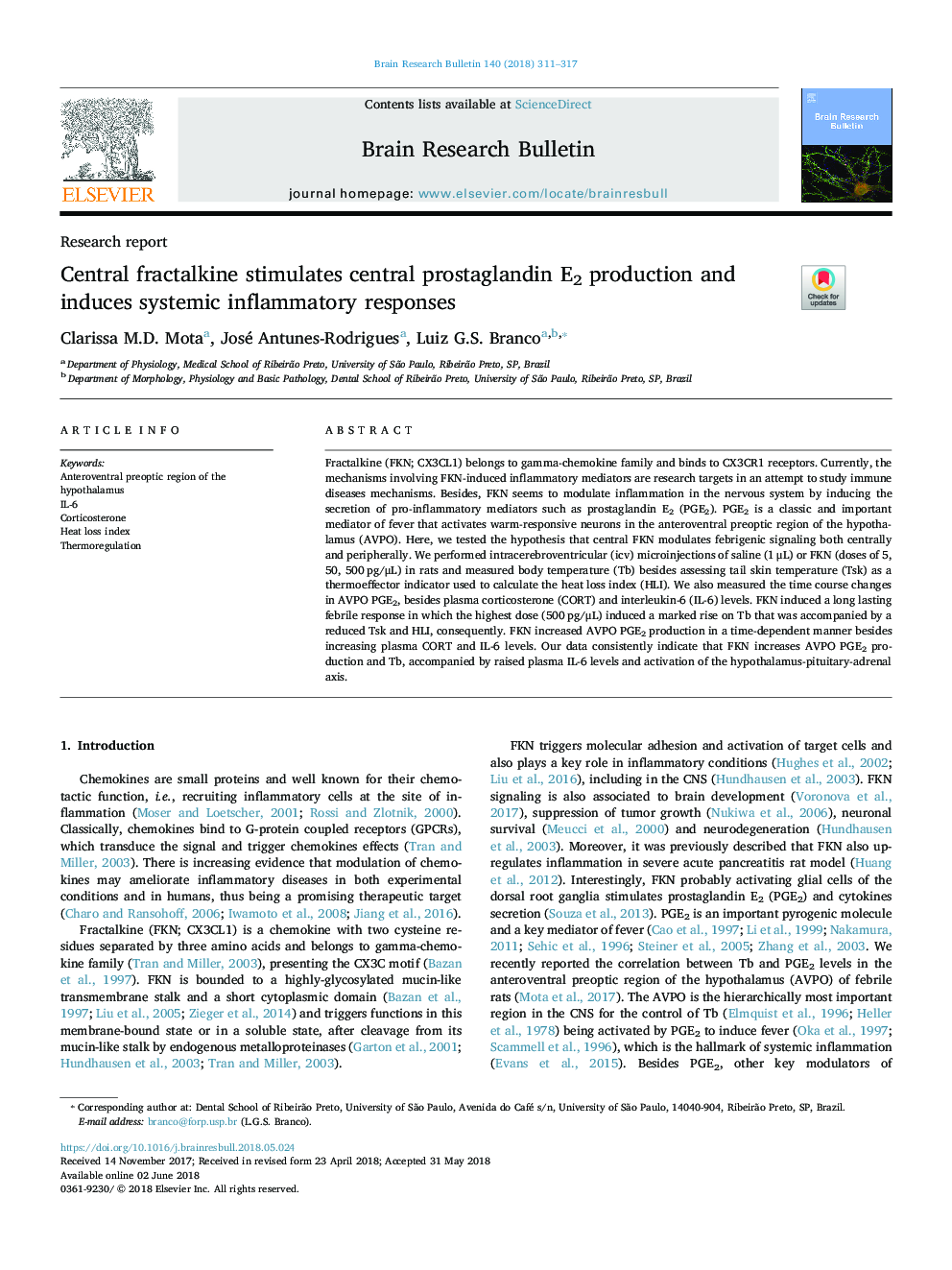| Article ID | Journal | Published Year | Pages | File Type |
|---|---|---|---|---|
| 8838882 | Brain Research Bulletin | 2018 | 7 Pages |
Abstract
Fractalkine (FKN; CX3CL1) belongs to gamma-chemokine family and binds to CX3CR1 receptors. Currently, the mechanisms involving FKN-induced inflammatory mediators are research targets in an attempt to study immune diseases mechanisms. Besides, FKN seems to modulate inflammation in the nervous system by inducing the secretion of pro-inflammatory mediators such as prostaglandin E2 (PGE2). PGE2 is a classic and important mediator of fever that activates warm-responsive neurons in the anteroventral preoptic region of the hypothalamus (AVPO). Here, we tested the hypothesis that central FKN modulates febrigenic signaling both centrally and peripherally. We performed intracerebroventricular (icv) microinjections of saline (1â¯Î¼L) or FKN (doses of 5, 50, 500â¯pg/μL) in rats and measured body temperature (Tb) besides assessing tail skin temperature (Tsk) as a thermoeffector indicator used to calculate the heat loss index (HLI). We also measured the time course changes in AVPO PGE2, besides plasma corticosterone (CORT) and interleukin-6 (IL-6) levels. FKN induced a long lasting febrile response in which the highest dose (500â¯pg/μL) induced a marked rise on Tb that was accompanied by a reduced Tsk and HLI, consequently. FKN increased AVPO PGE2 production in a time-dependent manner besides increasing plasma CORT and IL-6 levels. Our data consistently indicate that FKN increases AVPO PGE2 production and Tb, accompanied by raised plasma IL-6 levels and activation of the hypothalamus-pituitary-adrenal axis.
Related Topics
Life Sciences
Neuroscience
Cellular and Molecular Neuroscience
Authors
Clarissa M.D. Mota, José Antunes-Rodrigues, Luiz G.S. Branco,
